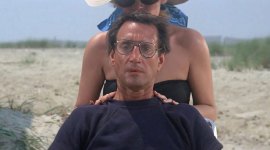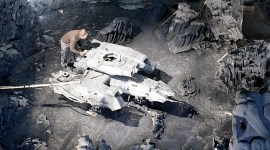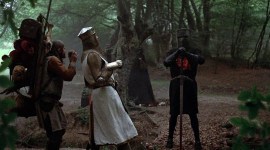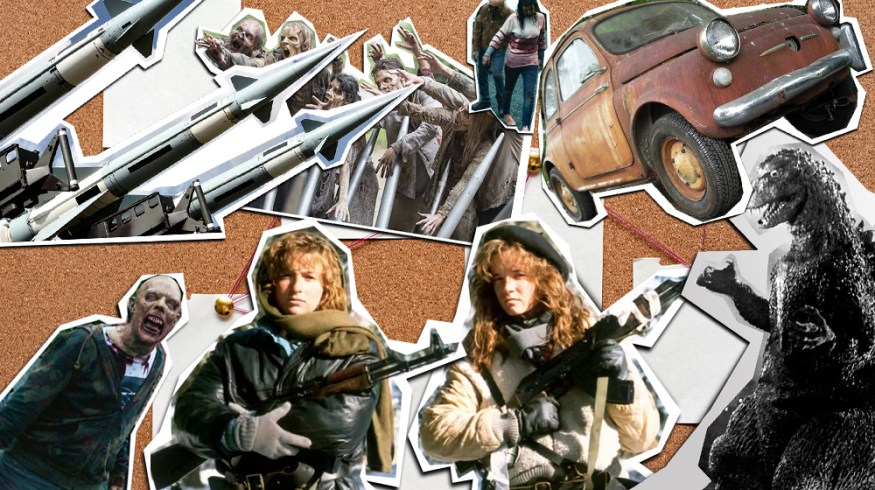
The Filmmaker’s Guide to the Apocalypse
The apocalypse film is a Hollywood favorite, but it’s often misunderstood. Here’s what the enterprising apocalypse filmmaker needs to know.
So, you want to make a movie about the apocalypse. Why not? Seems like everything’s on fire these days, so it’s definitely de rigueur. And, it must be pretty simple to make a movie about the end of the world, right? I mean, you just . . . end the world, don’t you?
While I’ll admit that movie would entertain me, it doesn’t quite do the genre justice. The end of the world is a bit more nuanced than that. Eschatology (mysticism about the world’s end) is very, very old. Our most ancient narratives are about the beginning and the ending of the world. The alpha and the omega. The lifespan of the universe itself.
And where have fourteen billion years of universal evolution gotten us? What effects have the vastness of the cosmos and the infinitude of time had on what we think the end times will be like?
The apocalypse film genre isn’t always that philosophical and, sure, you get to blow a lot of things up, but it may surprise you to hear that movies about the end of the world aren’t about the end of the world.
Let’s look at this oft-misunderstood genre and what we should consider before making our own apocalypse movie.
King Arthur, Mac and Cheese, and the End of the World
The first thing to remember in the event that you find yourself in an apocalypse film is don’t panic. It’s not like it’s the end of the world or anything. (Sorry, couldn’t resist.)
In our discussion of the science fiction film genre, we made the case that futuristic sci-fi movies aren’t about the future at all. As I said there, they can’t be.
We don’t know what the future holds, what it looks like, or (much less) how to get there early. And, even if we somehow could get to the future and back to tell the tale, our interpretations of what we saw there, what we experienced, and what people are doing in the future would all be based on what we know about reality right now.
It wouldn’t, in fact, be an unadulterated “future story” because our brains haven’t gotten there yet, so we wouldn’t know how to interpret the world the “future way.”
Let me put it to you another way. The first time you heard of or read any of the legends of King Arthur, you had probably already experienced television, the internet, drive-thrus, doctors’ offices, eyeglasses, refrigeration, and macaroni and cheese.
All of those things, and all of your interactions with them, have defined who you are and what the world means. If I told you this hamburger tasted like mac and cheese, you might think I’m stupid, but you’d at least know what I’m talking about.
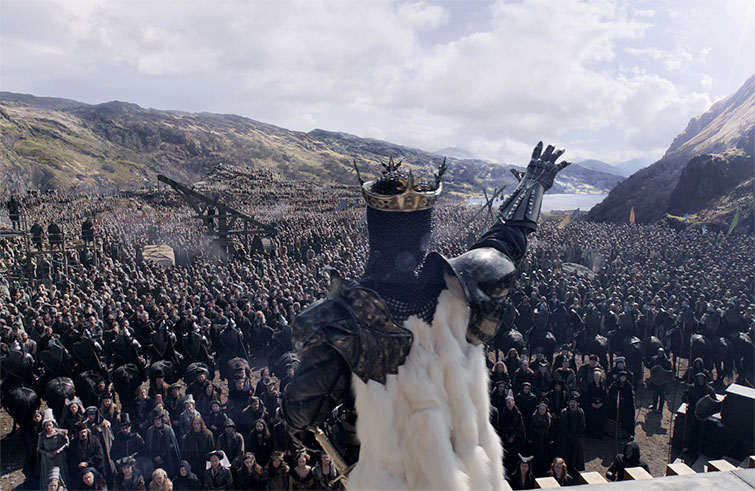
King Arthur never tasted macaroni and cheese, and neither did the people who created the stories about him. Hearing a King Arthur tale at the alehouse to pass the hours during a brutal winter in the Dark Ages is absolutely not the same thing as watching beautiful actors muck about in the dreary world of King Arthur: Legend of the Sword.
The ancient fans of King Arthur were trying to reassure themselves that a hero would arise to protect them against their many enemies. You and I are just killing time before our next trip to the microwave.
What does any of this have to do with the end of the world? Plenty. We can’t experience the end of the world and then make movies about it any more than we can go to the future or hang out with King Arthur. The fear of death, of annihilation, is among the most primitive of our shared human experiences. It’s not all that fun to think about, but it is unifying.
When the end of the world comes, we’re all screwed. It doesn’t matter whom you voted for or how you pronounce .gif. It’s a great equalizer, and it disrupts and recreates everything.
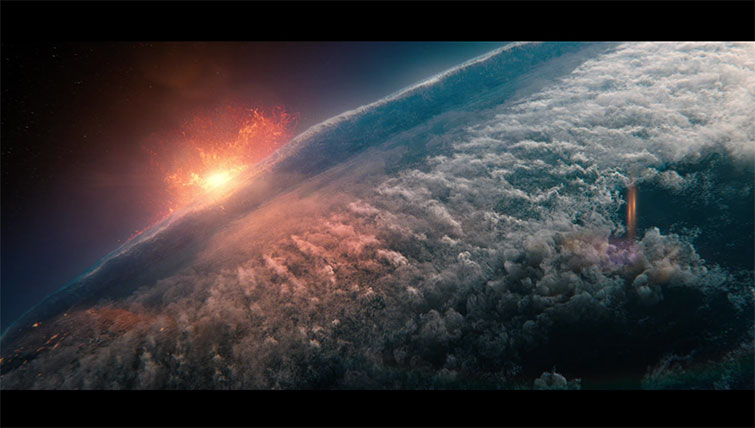
Maybe you know someone who went through the COVID-19 lockdown. Various parts of the world locked down more severely than others, but many billions of people had to simply stay put to a large degree. Loved ones became sick, jobs disappeared, and economies shook. Everything we knew about “normal” no longer was.
And, as some parts of the world have emerged from the experience, survivors are reconsidering what’s normal. Should you work this job you hate? Should you live in this city? Should you start a farm?
When we think, or pretend, that we’re all going to die, importance becomes a moving target. Films about the end of the world are about us, living well before the end of the world, and what we’re getting so wrong about living now instead of then.
How to Speak Apocalypse
That’s all well and good, but what does it mean for us as filmmakers? We’re getting to that. We’ll go over some of the apocalypse film’s sub-genres and what they can teach us as filmmakers. But first, how did we get here, and what is this genre really trying to do?
Earlier in this article, I dropped a five-dollar word on you: eschatology. It’s Greek for the study of ἔσχατος (“last”). Apocalypticism (the belief that the end is nigh) historically falls into two eschatological camps: the mystic, which regards the apocalypse as the end of normal reality and a reunion with the divine, and the mundane, which regards the apocalypse as the blowing-up of the physical world.
Many of the world’s major and historical religions concern themselves with mystical apocalypticism: Buddhism, Christianity, Islam, Hinduism, Judaism, Taoism, Zoroastrianism . . . and that’s not even including all the doomsday cults.
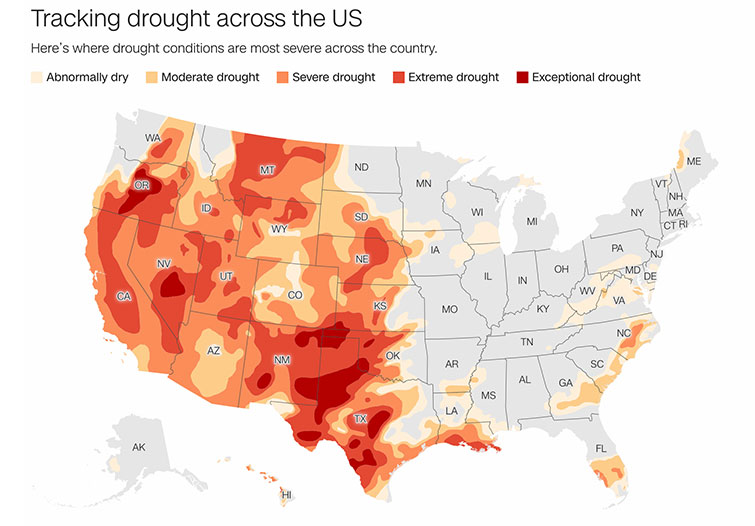
So, the previous paragraph is good for two things: 1) sounding smart at dinner parties when you’re talking about your apocalypse film and 2) revealing that we’ve been all about the end since the beginning.
Pretty much every ethical system from every culture in the world is deeply intertwined with the idea of an “end to all things.” What does that mean?
The audience for your film is truly international. This is rarer than you think. Let’s take The Happiness of the Katakuris, for example. This film probably resonated differently in Japan than in the U.S., like, say, Dazed and Confused didn’t really connect with teenagers everywhere. Apocalypse films have a broader appeal because of their universality.
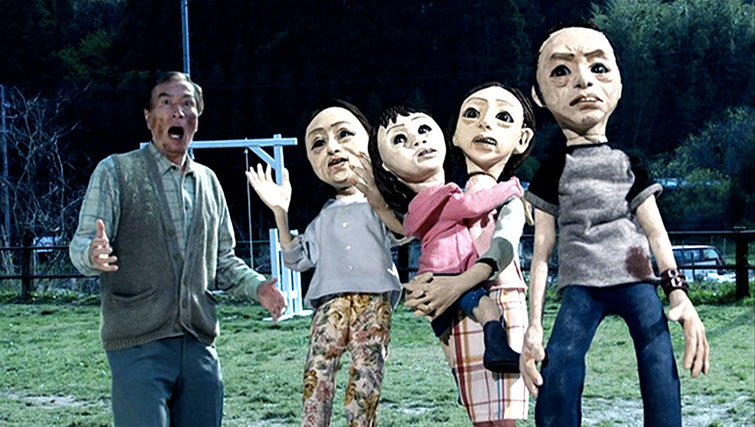
Apocalypse films are modern morality plays. They’re corrective—over and over, we see families torn asunder in apocalypse films. The movies begin this way, and the familial unit finds redemption through toil against the apocalypse to survive. It rights the wrongs of how we’re living now, and it does it over and over and over.
Now, let’s see all this in action with some of the genre’s most popular sub-genres.
Apocalypse Film Sub-genres
Monsters, by nature, are scary and awful. When you blast them with nuclear radiation or accidentally summon them from the horrifying reaches of outer space, they get even worse—and even bigger. So, first up, Apocalypse à la Monster.
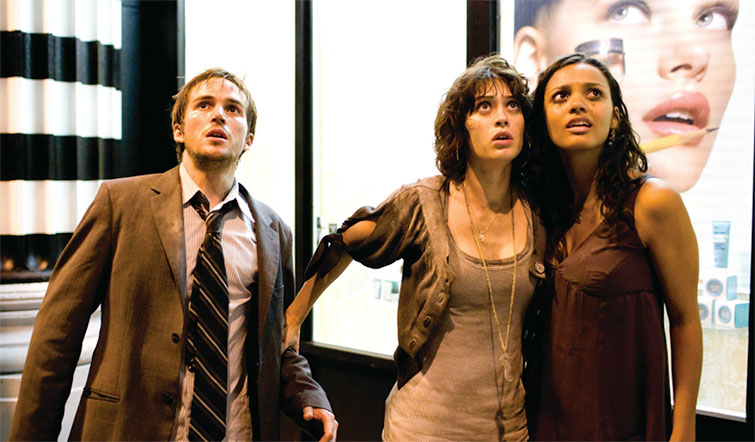
Monster Apocalypse
Tales of gods and monsters have been around forever, but things got real following the nuclear bombings of Hiroshima and Nagasaki during World War II. Of course, one of the most classic monster apocalypse franchises is Godzilla. It’s an ancient sea creature made huge thanks to nuclear radiation.
With the horrors of the WWII bombings fresh in everyone’s minds, Godzilla became a metaphor for the dangers of man’s hubris and the development of nuclear weaponry.
Later interpretations would include Godzilla as the U.S., awakened from its slumber and throwing elbows at Japan for the errors of its ways, and then (still later) the gulf between modern Japan and its imperial past.

Plots in monster apocalypses are staggeringly simple. Usually, they just explore survival in the face of unbeatable power. Often, survival doesn’t quite work out. These monsters are capable of causing all of our human catastrophes in one afternoon.
Cloverfield looks a lot like 9/11, Rampage avoids the nuclear detonation we all know is hanging over us every day, and Pacific Rim exposes the risks of our most important technologies failing us when we need them most.
The monster apocalypse is usually our own human stupidity come back to haunt us, and audiences love seeing just how bad it could be. The formula here is explosions, sirens, useless defenses, and a whole lot of collateral damage.
Zombie Apocalypse
Zombies and plagues go together like beer and pizza. After all, the zombie apocalypse sub-genre (really, almost a genre of its own) treats zombies just like plagues, even if that isn’t how they got started.
Zombies have literally been done to death, so it’s important to know some nuance if you’re going to try to contribute to this ultimate plague genre.
What we think of as zombies today is largely due to George Romero‘s Night of the Living Dead. Romero never used the term in his film—in fact, he felt that his antagonists were so sufficiently different from “real” zombies that they were “something completely new.”
But, you can’t control the cat once it’s out of the bag, and fans of Romero’s assigned the appellation to his work for him.
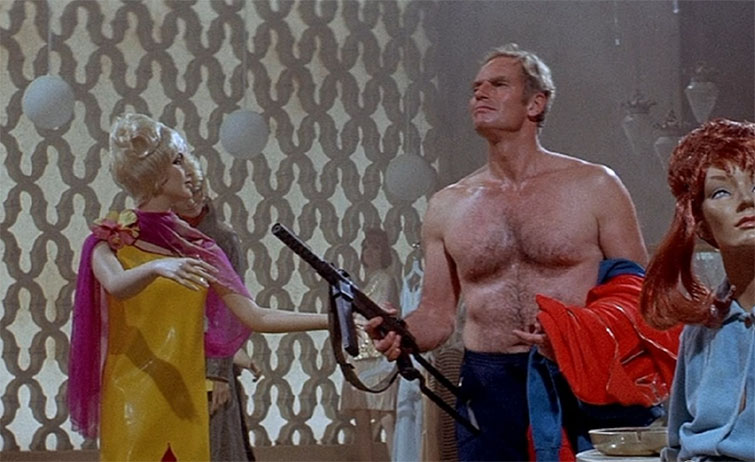
Romero’s inspiration came not from the undead revenants of West African and Haitian mythology, but from one Richard Matheson. Matheson’s seminal work I Am Legend pits one man against an entire world of vampires, and it asks us who it is that deserves the title of the book (it’s much more nuanced than the rather inelegant interpretation we see in the 2007 film adaptation I Am Legend).
Romero thought that a story like this, which he considered being about a revolution, should have started sooner (take a second to go read up on fabula and syuzhet to really dig into the idea of the passage of narrative time).
Before Romero, zombiism wasn’t a plague—it was a curse. Corpses could be reanimated with the proper ceremony and a bit of magic. The idea, in practice, became a way to keep enslaved workers from committing suicide—lest they be resurrected as zombie slaves.
There have even been arguments about chemically induced zombiism (ever seen The Serpent and the Rainbow?), but the jury’s still out on that one.
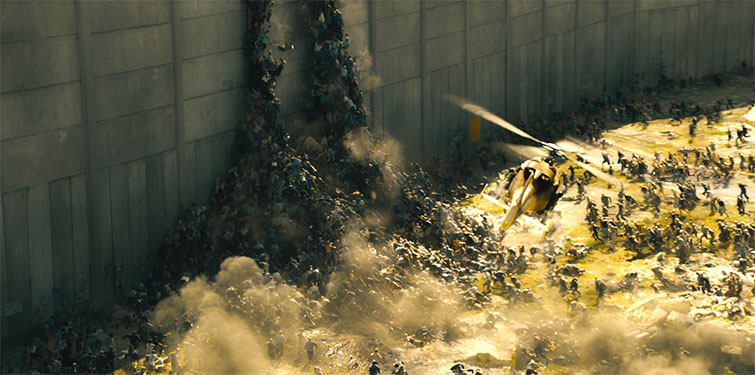
The zombie apocalypse sub-genre is fun because it gets to break a few rules. It almost always needs a deus ex machina. When only a handful of unafflicted humans are wandering the globe, something drastic and huge has to happen to correct the zombie plague—bombs, fire, chemicals. Something has to come in and clear everything out.
So, while we’re normally taught to avoid ham-fisted deus ex machina endings, you’ve pretty much got carte blanche when it comes to your zombie apocalypse movie.
Zombie apocalypse films are the ultimate “us vs. them” conflicts, so they can (though they don’t have to) stand in for virtually any dehumanization going on anywhere in the world (and any when in time). Zombies are a wave, an unavoidable threat that will wash over “us” and turn everything into “them.”
If you’ve ever read a single page of international political reportage, this should sound depressingly familiar.
When it comes to zombies, you’ve either got to figure out how to help them, or you need to shoot them in the head. Them’s the rules.
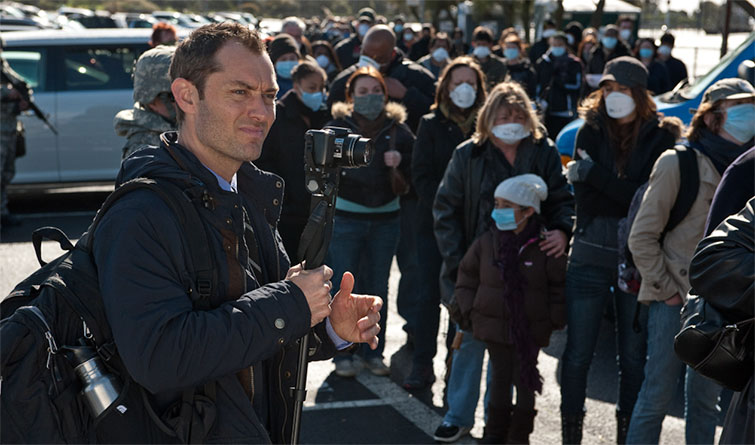
Invasion Apocalypse
This is the apocalypse film fan’s apocalypse. The creme de la creme. In many ways, the dream. The invasion scenario is what doomsday preppers, separatists, conspiracy theorists, and angry young activists pine for.
Everyone has wondered what you’d do when the rule of law broke down and you had to survive without society (-cough-), but for some, that dream runs a little deeper.
The invasion film brings the outsiders into our backyards. The walls have been breached, the beaches stormed, and somehow, our defenses have failed. On our home turf, the enemy is here, and we have to fight or die.

What makes this sub-genre an apocalypse and not just a movie about . . . well, war? Often, it’s the stakes that we don’t see. On the surface, ragtag groups of guerrilla vigilantes fight to save their homes, but it’s not just cul-de-sacs and shopping malls at risk. If we lose this fight, the world ends. The specter of global annihilation is on one of those horses of the apocalypse just behind the invaders.
Or, so we believe.
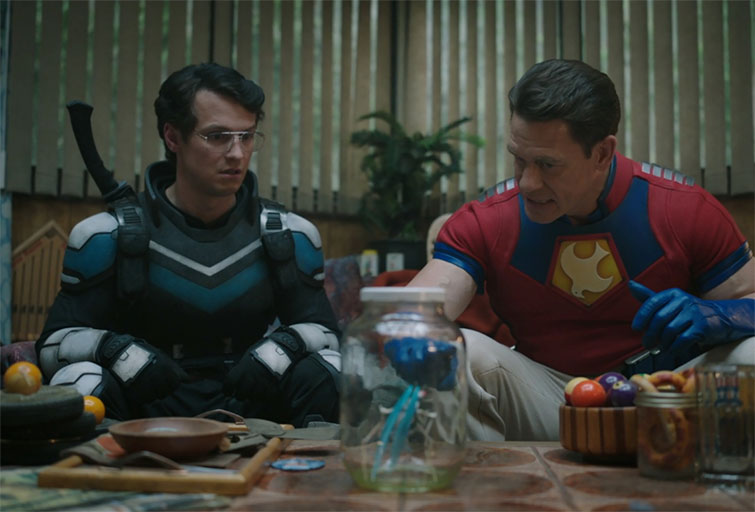
Invaders can be political enemies du jour, aliens, supernatural bodysnatchers, spies, or even zombies (if we want to cross some sub-genres here). The point is that they validate our beliefs about ourselves. We’re the best, the most important, and the only ones standing in the way of a global descent into barbarism.
We never really see the full scope of the threat in these films because our point of view is more-or-less attached to the heroes making their way through the conflict. That means the sub-genre is friendly to indie filmmakers, who might not have access to 10,000 extras.
Natural Disaster
This one is a personal favorite. Apocalypse à la Nature gets some of the best tropes of the genre. Nothing is too over-the-top for these Big Top Apocalypse Events.
Blowing up an asteroid to save Earth from Armageddon? Check. Triggering every natural disaster possible at the same time, all over the world? Check. Diverting the moon (which is a hollow Dyson sphere, btw) before it smashes into Earth? Check.
Disaster flicks are when the Major League effects studios come out to play. These movies are usually thinly plotted, heavily affected, and a helluva lot of fun to watch.
The formula goes something like this:
- Plucky, weirdo scientist discovers some very bad news. Everyone ignores them. (Cassandra, much?)
- A washed-up hero/specialist/celebrity was once perfect at handling just about exactly this scenario. But, it’s been a long time, and it’s hard to give up the bottle.
- Said hero/specialist/celebrity’s family has either fallen apart entirely, or is about to.
- Things start to happen, and we can’t ignore science any longer.
- The government hatches a plan to save the world. Success depends on, you know it, the hero/specialist/celebrity.
- Our hero reluctantly agrees, and they listen to the scientist.
- Our protagonists fight their way through non-stop thrills and chills, and in the end, they save the world. The hero/specialist/celebrity patches things up with their family.
- Rinse and repeat.
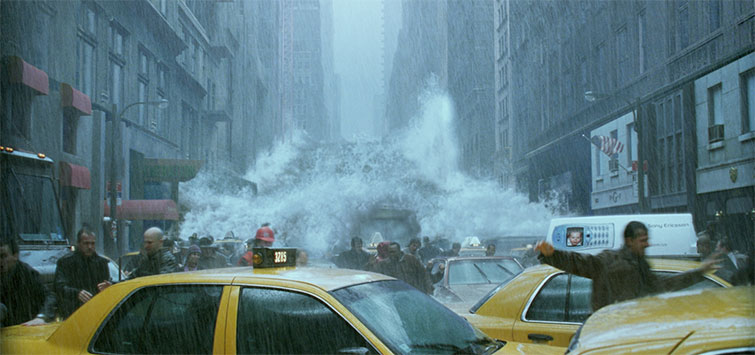
Disaster flicks are often cautionary tales trying to highlight the dangers of how we treat the environment. They’re also cautionary tales about how we treat that all-too-important resource: family. Family and Earth become one in a film like this. And, to save both, you have to take them right up to the edge of destruction.
In the end, we learn that we’re nothing if we’re not together, and the world isn’t our ally—it’s our adversary.
(Side note: If you want to see the most bonkers of all disaster films, watch Moonfall. The degree of exaggeration the creators went to dwarfs any other film in this sub-genre. I actually purchased this film because it wasn’t available to rent, and I wanted to talk about it in this article. However, it goes beyond words, and I can’t spoil it for you. Just trust me . . .)
Nuclear Apocalypse
This is the grande dame of the genre. It’s possibly the most refined, and has given rise to many of the sub-genres that it now calls cousins.
Nuclear annihilation. The bomb. Entire nations gone dark. Entire continents uninhabitable. In this sub-genre, the worst has happened. Unlike the Invasion Apocalypse, we don’t almost go to nuclear war—we already did.
There isn’t a whole lot to say about this sub-genre because it speaks for itself. There are very few humans left, and they’re in enclaves where they can still eek out a living. Usually, they don’t have much time left, as the nuclear fallout creeps its slow way around the world.
All they have are memories of the familiar world, and their unavoidable collision with extinction is a nihilistic meditation on humanity, and everything we think is important.
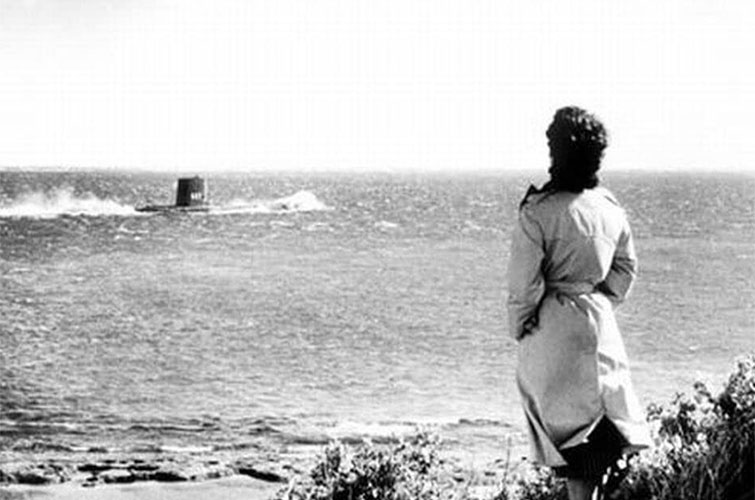
Sounds kind of depressing (it almost always is), but it’s also eerily beautiful, as well. In an era when phrases like “This, too, shall pass” have left the halls of ancient Persia and made it into everything from advertisements to wellness mantras, the nuclear apocalypse reminds us that it’s later than we think, and even when we end the world, there will still be stories to tell about it.
So, what good is any of this when you’re trying to make a film? We didn’t talk about depth of field, bouncing light, or even LUTs, like, at all. Because that’s fine—you’ll find links to these topics just below this paragraph.
What we wanted to emphasize with this tour of the apocalypse movie genre is that it’s nuanced, and its best examples are just disaster-porn. Identify what makes this genre so compelling, and then mix it up.
Interesting things happen in the apocalypse . . . don’t be dull.
For more production tips on bringing your apocalyptic films to life, check out the tips below:
- For zombie apocalypse: 3 Practical Gore Effects for Your Next Horror Short
- For nuclear apocalypse: How to Weather and Age Props
- For natural disasters: Create Rain, Snow, and Fog Using These Low-Budget Effects
- For invasion apocalypse: Create A Shootout Scene In After Effects + Free Muzzle Flashes and Sparks
- For monster apocalypse: Cinematography Tip: Creating the Illusion of Scale
Cover image from Armageddon via Buena Vista Pictures.



